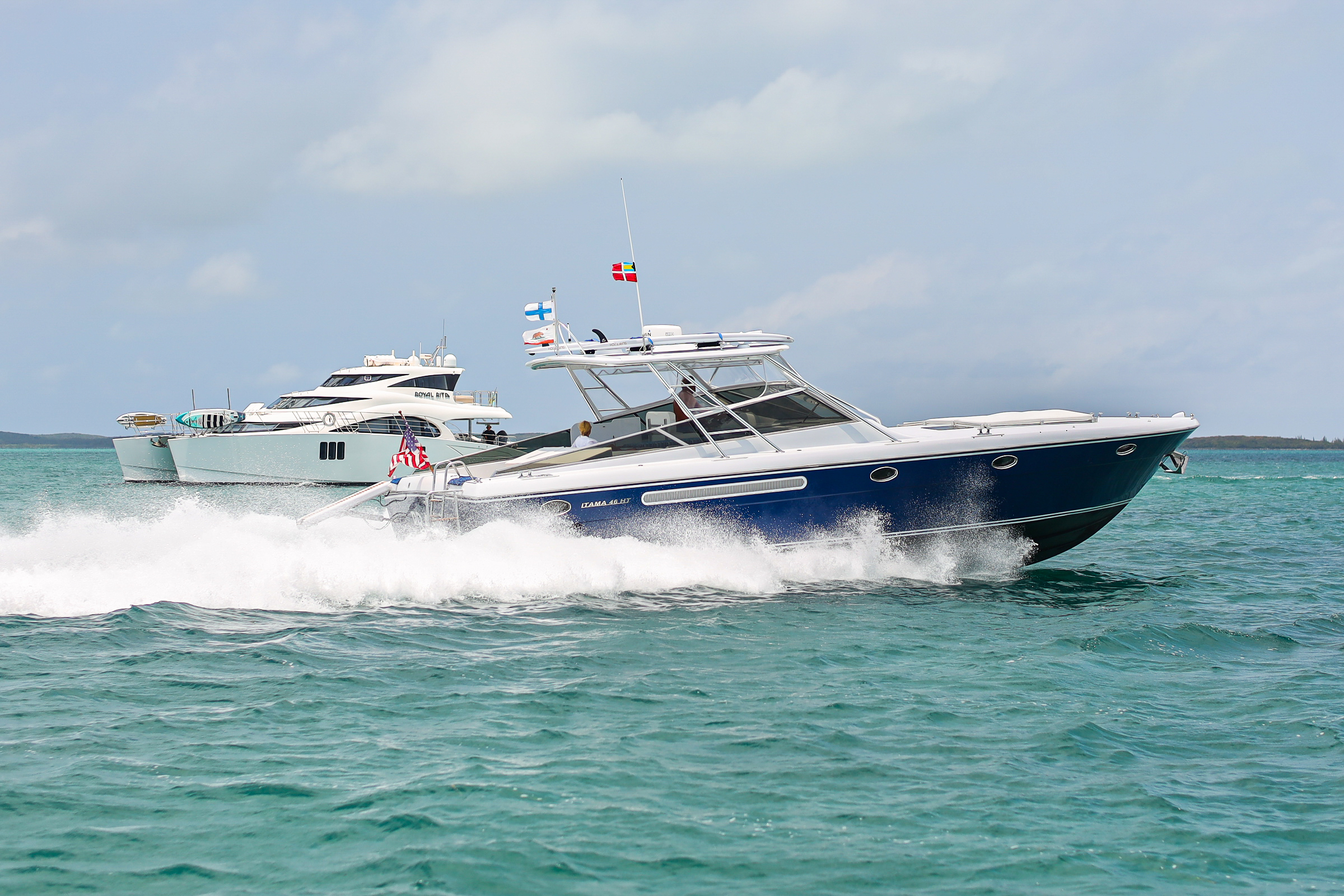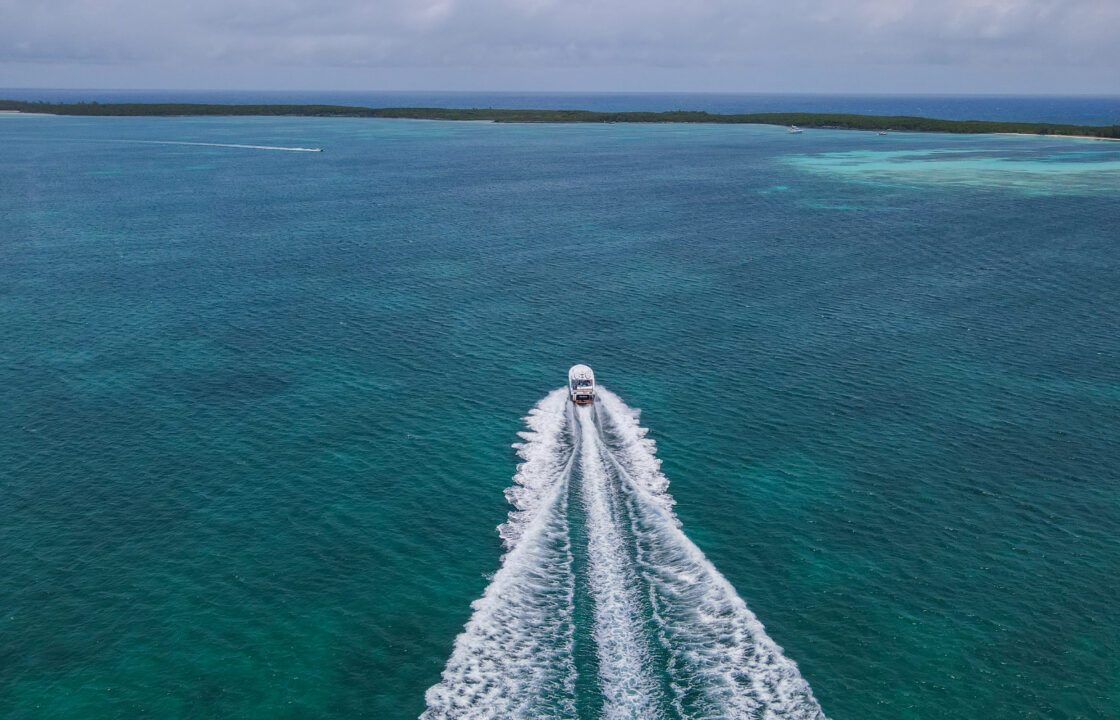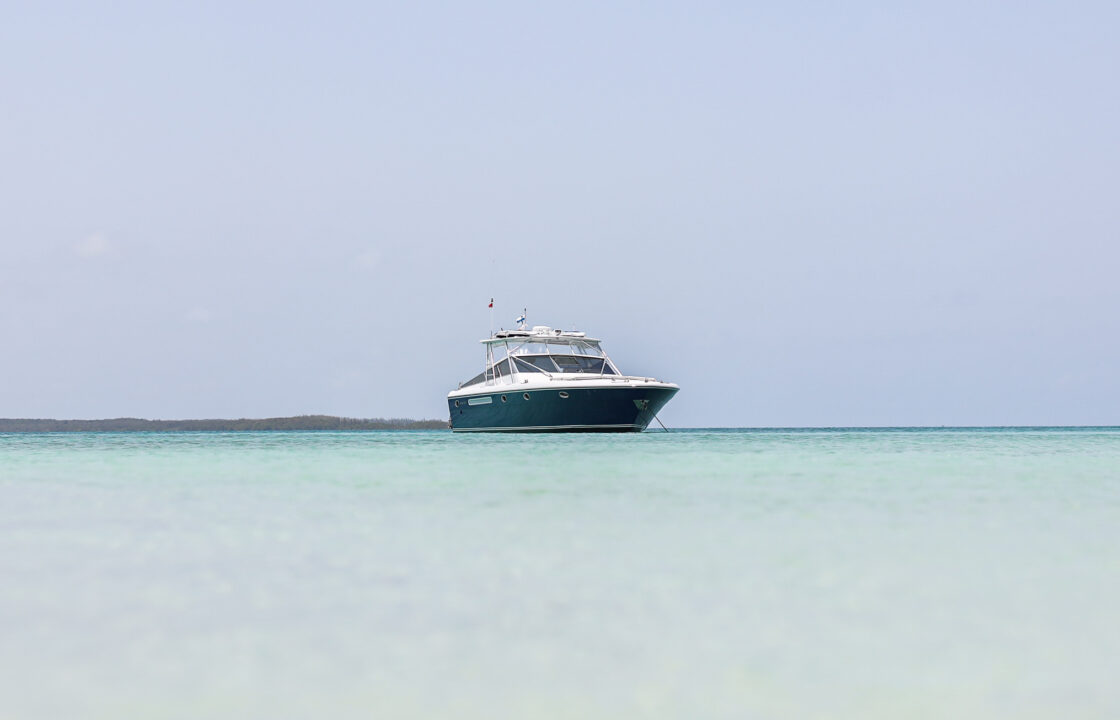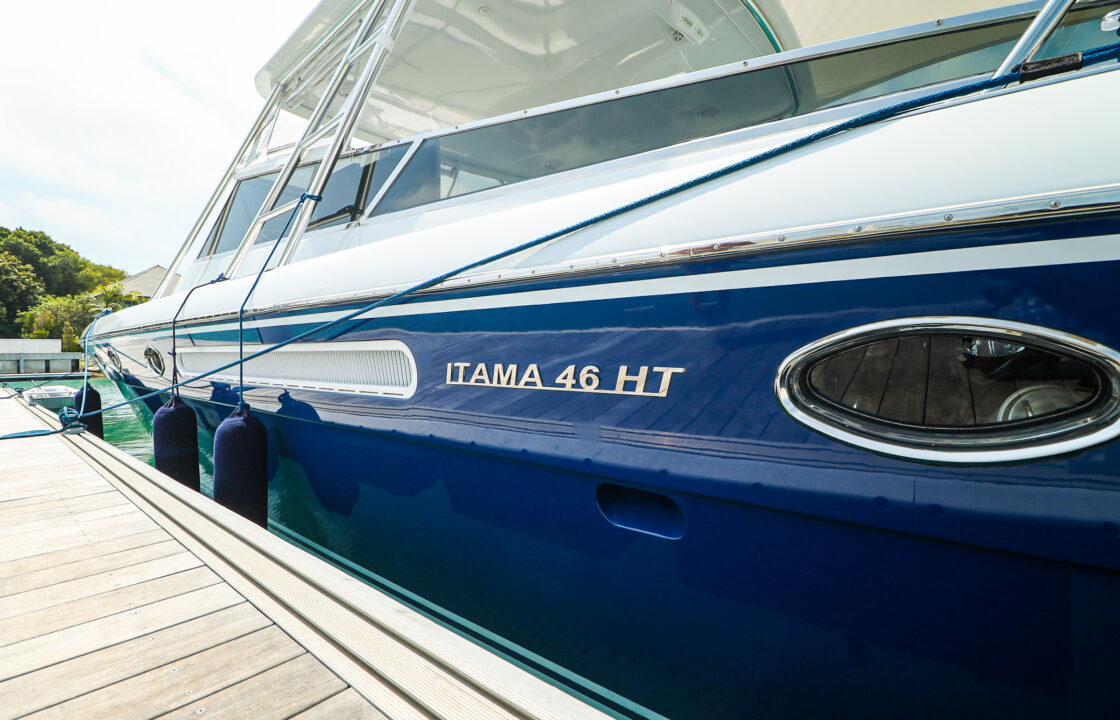
-
by admin
I. Introduction
The journey of yacht propulsion is a fascinating tale of human ingenuity and technological advancement, mirroring the broader evolution of maritime technology. From the earliest days of seafaring to the cutting-edge vessels of today, the methods used to power yachts have undergone remarkable transformations, each bringing new possibilities for speed, efficiency, and luxury.
A. Brief history of yacht propulsion
- Ancient sailing vessels: The story begins with the Phoenicians and Romans, whose galleys relied on the power of wind and human rowers. These early vessels, while primitive by today’s standards, laid the foundation for millennia of maritime innovation.
- Age of Exploration: As European nations sought new trade routes and territories, sail design and rigging saw significant advancements. The introduction of fore-and-aft rigs allowed ships to sail closer to the wind, greatly expanding their capabilities.
- Industrial Revolution: The late 18th and 19th centuries brought a revolution in propulsion by introducing steam power. Suddenly, yachts were no longer at the mercy of the wind, ushering in a new era of reliability and speed.
- 20th century: The advent of diesel engines marked another leap forward. These powerful, efficient engines quickly became the standard for luxury yachts, offering a perfect balance of performance and range.
B. Importance of propulsion in yacht performance and efficiency
The propulsion system is the heart of any yacht, profoundly influencing every aspect of its performance:
- Speed and range capabilities: The choice of propulsion directly determines how fast a yacht can travel and how far it can go without refueling.
- Fuel consumption and operating costs: Efficient propulsion systems can significantly reduce the ongoing costs of yacht ownership.
- Environmental impact: As sustainability becomes increasingly important, propulsion choices are crucial in a yacht’s ecological footprint.
- Comfort and noise levels: The propulsion system greatly affects the onboard experience, influencing factors like vibration and noise.
- Maneuverability and handling characteristics: Different propulsion methods offer varying degrees of control, which is significant in tight marina spaces or rough seas.
II. Traditional Propulsion Methods
A. Sail power
Sailing yachts have a timeless appeal. They combine the thrill of harnessing nature’s power with a connection to maritime tradition.
Types of sails and rigging:
- Square rigs:
- Primarily used on larger vessels
- Highly efficient for downwind sailing
- Examples include full-rigged ships and barques
- Fore-and-aft rigs:
- Bermuda/Marconi rigs: The most common modern sailplane, known for its efficiency and ease of use
- Gaff rigs: Offering a vintage aesthetic with good performance
- Lateen sails: Triangular sails with excellent upwind capabilities
- Modern innovations:
- Wing sails: Rigid or semi-rigid airfoil-like structures offering improved efficiency
- Rigid sails: Solid structures that can be adjusted for optimal performance in various wind conditions
Advantages and limitations of sail power:
Advantages:
- Zero emissions during operation
- Low operating costs once the initial investment is made
- Silent propulsion, offering a serene sailing experience
- Connection to nature and traditional sailing skills
Limitations:
- Dependence on wind conditions
- Generally slower speeds compared to motor yachts
- Requires a skilled crew for optimal performance
- Limited ability to maintain strict schedules
B. Early motor yachts
The transition from sail to engine power marked a revolutionary change in yachting, offering new levels of convenience and performance.
Steam engines:
- Pioneering steam yachts:
- SS Cangarda: A notable example of an early 20th-century steam yacht luxury
- MY Delphine: One of the last large American-built steam yachts
- Boiler and engine room layouts:
- Required significant space for coal or oil storage
- Complex systems of pipes, valves, and gauges
- Needed constant attention from skilled engineers
- Fuel types:
- Initially coal-fired, requiring frequent refueling stops
- Later transitioned to oil, offering improved efficiency and cleanliness
Transition to internal combustion engines:
- Early gasoline engines:
- Offered a much higher power-to-weight ratio than steam
- Allowed for smaller, more nimble yachts
- Presented some safety concerns due to fuel volatility
- Emergence of diesel engines:
- It provided better fuel efficiency than gasoline
- Improved safety due to lower volatility of diesel fuel
- Offered longer engine life and lower maintenance requirements
This transition period saw rapid innovation, with yacht designers and engineers constantly pushing the boundaries of what was possible in marine propulsion.
III. Modern Diesel Engines
The evolution of diesel technology has revolutionized yacht propulsion, offering unprecedented levels of power, efficiency, and reliability.
A. Advancements in diesel technology
- Common rail fuel injection systems:
- Allows for precise control of fuel injection timing and quantity
- Results in improved fuel efficiency and reduced emissions
- Enables smoother engine operation across all speed ranges
- Turbocharging and supercharging:
- Forces more air into the combustion chamber, increasing power output
- Improves fuel efficiency by allowing more complete combustion
- Modern variable geometry turbochargers offer enhanced performance across all engine speeds
- Electronic engine management systems:
- Continuously monitors and adjusts engine parameters for optimal performance
- Enables integration with other onboard systems for improved overall efficiency
- Facilitates easier diagnostics and maintenance
- Lightweight materials:
- Use of aluminum alloys and composites in engine construction
- Reduces overall weight, improving yacht performance and fuel efficiency
- Offers better corrosion resistance in marine environments
B. Fuel efficiency and power output
- Improved combustion processes:
- Advanced piston and cylinder designs for more efficient fuel-burning
- Use of multiple injectors per cylinder for finer fuel atomization
- Higher compression ratios:
- Modern engines operate at higher pressures, extracting more energy from each fuel cycle
- Requires stronger engine components but results in significantly improved efficiency
- Multi-stage turbocharging:
- Uses two or more turbochargers in series or parallel
- Provides better power delivery across a wider range of engine speeds
- Improves overall engine efficiency, especially at higher power outputs
- Comparison of power-to-weight ratios over time:
- Modern diesel yacht engines offer up to 50% better power-to-weight ratios compared to those from 30 years ago
- This improvement allows for faster yachts with greater carrying capacity and range
C. Environmental considerations
- Emission control technologies:
- Selective Catalytic Reduction (SCR): Reduces NOx emissions by up to 90%
- Diesel Particulate Filters (DPF): Captures and eliminates particulate matter
- Exhaust Gas Recirculation (EGR): Lowers combustion temperatures, reducing NOx formation
- IMO Tier III compliance strategies:
- New engines must meet stringent emission standards in designated Emission Control Areas (ECAs)
- Yacht builders integrating compliant engines or retrofitting existing vessels with emission reduction systems
- Low-sulfur fuel requirements:
- Global shift towards using fuels with lower sulfur content
- Requires modifications to fuel systems and engine tuning
- Results in significantly reduced SOx emissions
- Biodiesel and renewable diesel options:
- Growing interest in alternative fuels derived from renewable sources
- It can be used in many modern diesel engines with minimal modifications
- Offers reduced lifecycle carbon emissions compared to traditional diesel
IV. Pod Drives and Azipods
Pod drives represent a significant leap forward in yacht propulsion technology, offering improved efficiency and maneuverability.
A. How pod drives work
- Steerable underwater units:
- Combine propulsion and steering in a single unit
- Can rotate 360 degrees, providing thrust in any direction
- Direct drive vs. Z-drive configurations:
- Direct drive: Motor directly connected to the propeller shaft
- Z-drive: Uses a series of gears to transfer power from the motor to the propeller
- Integration with the ship’s steering and propulsion systems:
- Centralized control systems allow for intuitive maneuvering
- Often includes joystick control for ease of operation
B. Advantages in maneuverability and efficiency
- Elimination of rudders and reduction of gears:
- Simplifies the propulsion system, reducing potential points of failure
- Improves overall system efficiency
- Improved hydrodynamics and fuel efficiency:
- Streamlined design reduces water resistance
- Can improve fuel efficiency by up to 15% compared to traditional shaft systems
- Enhanced low-speed control and station-keeping:
- Allows for precise maneuvering in tight spaces
- Dynamic Positioning (DP) systems can maintain a yacht’s position without anchoring
- Reduced noise and vibration:
- Electric motors in pods are generally quieter than traditional diesel engines
- Improved isolation from the hull structure reduces transmitted vibrations
C. Popular models and manufacturers
- Volvo Penta IPS:
- Forward-facing, twin counter-rotating propellers
- Claims up to 30% lower fuel consumption than traditional shaft systems
- ZF Marine ZIPod:
- Offers both L-drive and Z-drive configurations
- Suitable for a wide range of yacht sizes
- ABB Azipod:
- Primarily used in larger vessels, including cruise ships
- Offers models with power outputs up to 22 MW
- Rolls-Royce Azipull:
- Combines pod propulsion with a pulling propeller
- Designed for improved efficiency in displacement and semi-displacement hulls
V. Hybrid Propulsion Systems
Hybrid systems represent the cutting edge of yacht propulsion, offering flexibility and improved efficiency.
A. Combining diesel and electric power
- Serial hybrid configurations:
- Diesel engines generate electricity, which powers electric motors
- Allows for optimized engine operation and improved fuel efficiency
- Parallel hybrid setups:
- Both diesel engines and electric motors can directly drive the propellers
- Offers flexibility to use the most efficient power source for different conditions
- Power management strategies:
- Sophisticated control systems optimize power distribution
- Can automatically switch between power sources based on demand and efficiency
B. Benefits of hybrid systems
- Flexible power delivery:
- Can operate on diesel, electric, or a combination of both
- Allows for silent, emissions-free operation when running on batteries
- Reduced emissions in sensitive areas:
- Ability to switch to all-electric mode in ports or protected marine areas
- Helps comply with increasingly stringent environmental regulations
- Lower fuel consumption:
- Electric power for low-speed maneuvering and station-keeping
- Diesel engines run at optimal speeds when generating power
- Quieter operation in electric mode:
- It enhances onboard comfort and allows for peaceful nighttime cruising
- Reduces disturbance to marine life in sensitive areas
C. Examples of hybrid yachts
- Feadship’s Savannah:
- The first hybrid superyacht, launched in 2015
- Features a single diesel engine, three generators, and a large battery bank
- Heesen’s Home:
- Fast Displacement Hull Form (FDHF) with hybrid propulsion
- Offers significant fuel savings and reduced environmental impact
- Sunreef 80 Eco:
- Hybrid catamaran with extensive solar power integration
- Features lightweight batteries and highly efficient electric motors
These advancements in diesel technology, pod drives, and hybrid systems demonstrate the yachting industry’s commitment to improving performance, efficiency, and environmental sustainability. The next sections will explore full electric propulsion and emerging technologies shaping the future of yacht propulsion.
VI. Full Electric Propulsion
As the yachting industry embraces sustainability, full electric propulsion is gaining traction, offering a zero-emission alternative for environmentally conscious owners.
A. Current state of electric yacht technology
- High-capacity lithium-ion battery systems:
- Energy densities continue to improve, now reaching up to 250 Wh/kg
- Advanced battery management systems ensure optimal performance and longevity
- Some yachts now feature battery capacities exceeding 1 MWh
- Advancements in electric motor efficiency:
- Modern permanent magnet motors achieve efficiencies of over 95%
- Direct drive systems eliminate transmission losses
- Cooling systems allow for sustained high-power output
- Charging infrastructure developments:
- High-power DC fast charging stations emerging in major marinas
- Some yachts incorporate onboard solar panels for continuous charging
- Development of standardized charging protocols for marine applications
- Range and performance capabilities:
- Smaller electric yachts are now capable of 50+ nautical miles at cruising speeds
- Larger vessels combining batteries with hydrogen fuel cells for extended range
- Performance electric boats achieving speeds over 40 knots
B. Advantages and challenges
Advantages:
- Zero emissions during operation
- Extremely low noise and vibration levels
- Reduced maintenance requirements
- Instant torque for responsive handling
Challenges:
- Limited range compared to fossil fuel-powered yachts
- Significant battery weight impacting vessel design
- Long charging times, especially for larger vessels
- Higher initial cost, though this is decreasing over time
C. Notable electric yacht projects
- Silent Yachts:
- Pioneers in solar-electric catamarans
- Models range from 55 to 80 feet, capable of trans-ocean voyages
- Utilizes extensive solar arrays and large battery banks
- X Shore Eelex 8000:
- High-performance electric day boat
- 225 kW motor provides a top speed of 35 knots
- Range of up to 100 nautical miles at lower speeds
- Candela C-8:
- Hydrofoiling electric boats for increased efficiency
- Computer-controlled foil system for a smooth ride
- Achieves over 50 nautical miles of range at 22 knots
VII. Alternative and Emerging Technologies
The quest for sustainable propulsion has led to exploring various alternative technologies, each offering unique benefits and challenges.
A. Hydrogen fuel cells
- How fuel cells work in marine applications:
- Convert hydrogen into electricity, with water as the only byproduct
- It can be used in conjunction with battery systems for optimized performance
- Offer potential for longer range compared to battery-only systems
- Advantages:
- Long-range capabilities, potentially exceeding that of diesel engines
- Quick refueling compared to battery charging
- Zero emissions during operation
- Challenges:
- Hydrogen storage requires specialized, high-pressure tanks
- Limited hydrogen refueling infrastructure for marine applications
- Higher cost compared to conventional systems
- Examples:
- Energy Observer: First hydrogen-powered vessel to circumnavigate the globe
- AQUA: Concept superyacht designed around hydrogen fuel cell technology
B. Solar-powered yachts
- Advancements in marine solar panel efficiency:
- Latest marine-grade panels achieving efficiencies of over 24%
- Flexible and semi-transparent panels allow for creative integration into yacht design
- Emerging perovskite solar cell technology promising even higher efficiencies
- Energy storage and management systems:
- Smart systems balancing solar input, battery storage, and power consumption
- Predictive algorithms optimizing energy use based on weather forecasts and planned routes
- Integration with other propulsion methods:
- Solar often combined with electric motors and batteries
- Some designs incorporate solar as a range extender for conventional propulsion
- Case study: PlanetSolar Tûranor:
- First solar-powered vessel to circumnavigate the globe
- 8.5 tons of lithium-ion batteries and 512 square meters of solar panels
C. Wind-assisted propulsion (modern sail tech)
- Rigid wing sails:
- Oceanbird concept vessel: Aims to reduce emissions by 90% using five 80-meter rigid sails
- More efficient than traditional soft sails, but require specialized handling
- Flettner rotors:
- Vertical rotating cylinders that generate propulsion from wind
- E-Ship 1 cargo vessel demonstrates fuel savings of up to 25% using four Flettner rotors
- Kite systems:
- SkySails technology: Large kites can supplement propulsion, reducing fuel consumption
- Automated systems control kite deployment and retrieval
- Dynamic foils:
- Oceanwings by VPLP Design: Automated rigid wing sails
- Can be retrofitted to existing vessels, offering fuel savings up to 42%
VIII. Future of Yacht Propulsion
As technology advances and environmental concerns grow, yacht propulsion’s future promises to be exciting and sustainable.
A. Trends in sustainable propulsion
- Increasing electrification across all yacht sizes:
- Improved battery technology enabling larger all-electric yachts
- Hybrid systems are becoming standard in mid-size to large yachts
- Development of sustainable, carbon-neutral fuels:
- Synthetic fuels produced using renewable energy
- Biofuels derived from algae and other sustainable sources
- Integration of AI and autonomous systems for optimal efficiency:
- Machine learning algorithms optimizing route planning and power management
- Predictive maintenance systems reduce downtime and improve efficiency
- Lightweight, high-strength materials for improved performance:
- Advanced composites reduce overall vessel weight
- Nanomaterials enhancing strength-to-weight ratios of propulsion components
B. Upcoming technologies and innovations
- Advanced battery technologies:
- Solid-state batteries offer higher energy density and improved safety
- Lithium-sulfur batteries promise even greater energy storage capacity
- Superconducting motors for improved power density:
- Dramatically reduced electrical resistance for higher efficiency
- Compact designs allow for more flexible yacht layouts
- Artificial photosynthesis for onboard fuel production:
- Converting sunlight, water, and CO2 into hydrogen or other fuels
- Potential for energy-independent, long-range cruising
- Biomimetic propulsion inspired by marine life:
- Propulsion systems mimicking the movement of fish or jellyfish
- Potential for extremely quiet, efficient propulsion in sensitive marine areas
C. Regulatory influences on future developments
- IMO, greenhouse gas reduction targets:
- Aim to reduce carbon intensity of international shipping by 40% by 2030
- Driving innovation in low-carbon and zero-carbon propulsion technologies
- Regional emission control areas (ECAs):
- Stricter emission limits in coastal areas and ports
- Encouraging adoption of clean propulsion technologies and alternative fuels
- Potential carbon taxes on marine fuels:
- This may significantly impact the operating costs of conventional propulsion systems
- Could accelerate the shift toward sustainable propulsion methods
- Incentives for adopting green technologies:
- Government subsidies and tax breaks for eco-friendly yachts
- Green Certification Programs Influencing Buyer Preferences
IX. Conclusion
A. Recap of propulsion evolution
The journey of yacht propulsion from wind power to steam, diesel, and beyond reflects humanity’s ingenuity and adaptability. Recent decades have seen rapid advancements, with a convergence of traditional methods and cutting-edge technologies creating exciting new possibilities for yacht owners and designers.
B. The balance between performance, luxury, and sustainability
As the yachting industry navigates the waters of sustainability, it faces the challenge of maintaining the high performance and luxury standards that clients expect. This balance drives innovation, with new technologies often enhancing rather than compromising the yachting experience.
The role of yacht designers and engineers in shaping the future cannot be overstated. Their creativity and technical expertise will be crucial in developing environmentally friendly propulsion systems that deliver the power, range, and comfort that define luxury yachting.
Ultimately, the yachting industry has the potential to lead maritime sustainability efforts. By embracing new technologies and setting high standards for environmental performance, luxury yachts can serve as floating showcases for the future of maritime propulsion, inspiring changes across the entire marine industry.
As we look to the horizon, the future of yacht propulsion appears bright. It promises vessels that are cleaner, quieter, and more efficient than ever before, all while continuing to push the boundaries of luxury and performance on the high seas.
Keywords: yacht propulsion, marine engines, diesel yachts, pod drives, hybrid yachts, electric boats, sustainable boating, yacht technology, marine innovation, luxury yacht performance, hydrogen fuel cells, solar-powered yachts, wind-assisted propulsion, green yachting, maritime sustainability, Azipod propulsion, fuel efficiency, emission control, lithium-ion batteries, electric motors, renewable energy, carbon footprint reduction, eco-friendly yachts, advanced navigation systems, smart yacht technology


